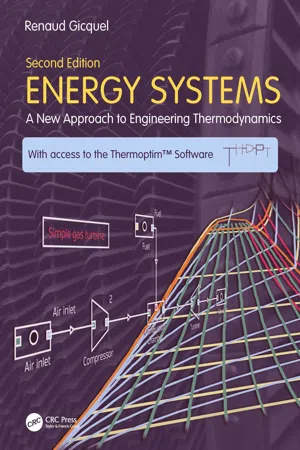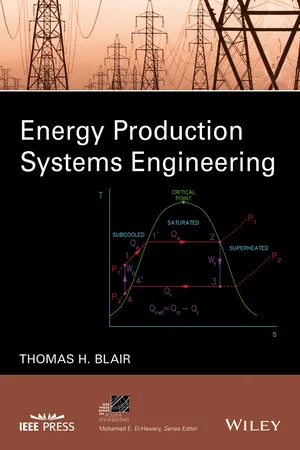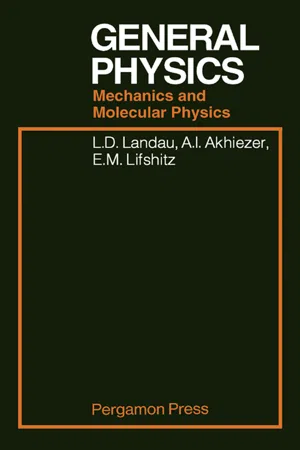Technology & Engineering
Isobaric Process
An isobaric process is a thermodynamic process in which the pressure remains constant. This means that work is done on or by the system without changing the pressure. In practical terms, this could occur in systems such as a constant-pressure heat exchanger or a gas expanding in a cylinder with a movable piston.
Written by Perlego with AI-assistance
Related key terms
Related key terms
1 of 4
Related key terms
1 of 3
4 Key excerpts on "Isobaric Process"
- eBook - ePub
- A. L. Stanford, J. M. Tanner(Authors)
- 2014(Publication Date)
- Academic Press(Publisher)
quasi-static process . Thus a process line is an infinite succession of equilibrium states. A process line, therefore, may be imagined as the idealized limiting case of a real process carried out more and more slowly.Two additional special processes are illustrated in Figure 10.10 . The process represented by the line from state 1 to state 2 takes place at a constant pressure P o . Such a process is called an Isobaric Process , and the line from 1 to 2 is called an isobar . The process from state 2 to state 3, which takes place at a constant volume V o , is called an isochoric process; and a line like that from 2 to 3 is called an isochor . One further process that will be of interest is one for which no heat enters or leaves the system. This is an adiabatic process , and a line representing such a process is called an adiabat . For an ideal gas, adiabats are the family of curves corresponding to the relation PV γ = constant. The quantity γ for the system is equal toCp/Cv ,the ratio of the heat capacities at constant pressure and constant volume. For monatomic gases, γ is ~1.7; for diatomic gases, γ is ~1.4.Figure 10.10 An Isobaric Process from state I to state 2 and an isochoric process from state 2 to state 3. The pressure is constant throughout the Isobaric Process. The volume is constant during the isochoric process.Exercise 10.30E 10.29
The volume of 0.60 mol of an ideal gas is tripled by an isobaric expansion from a state having P = 1.5 × 105 N/m2 and V = 7.5 × 10−3 m3 . What are the initial and final temperatures of the gas?Answer: 230 K, 680 KE 10.30
An ideal gas is compressed adiabatically from state A to state B - eBook - ePub
Energy Systems
A New Approach to Engineering Thermodynamics
- Renaud Gicquel(Author)
- 2021(Publication Date)
- CRC Press(Publisher)
We have seen that several sets of state variables can be used to characterize a thermodynamic system. The most “natural” are temperature, pressure and volume, but there are others, like the enthalpy defined in the previous chapter, and second, they are not fully satisfactory for our goals, as we shall show.Pressure P is essential, both because it directly determines the mechanical stress in components, and because, as we have seen, the reference process for fluid heating and cooling is isobaric.Temperature T is also essential, but, unlike its predecessor, the isothermic process does not correspond to any process that concerns us.Volume v intervenes very little in the analysis of interest, even in a closed system, because volume varies due to the existence of movable walls. In fact, its main practical interest is in the sizing of flow sections.Enthalpy h is a fundamental variable too, because it is directly related to energy exchanges that take place in the machines. For a perfect gas, it is a linear function of temperature, very easily deduced, and in the liquid–vapor equilibrium zone, it provides additional information on the quality. Finally, remember that the isenthalpic process is the reference process for an expansion without work.The analysis of processes undergone by fluids during compression and expansion with work showed that their reference process is reversible adiabatic. We indicated that for a perfect gas, it follows the law Pvγ = Const. - eBook - ePub
- Thomas Howard Blair(Author)
- 2016(Publication Date)
- Wiley-IEEE Press(Publisher)
- Heat rate is a measure of the energy into the system divided by the energy out of a system.
- Isentropic process is a process that occurs at constant entropy.
- Isobaric Process is a process that occurs at constant pressure.
- Isometric process is a process that occurs at constant volume.
- Isothermal process is a process that occurs at constant temperature.
- Latent Heat Transfer – A process when energy is transferred and results in a change in the state of the material (i.e., change from liquid to gas), but the temperature remains constant.
- Natural Circulation – The circulation of water in a boiler caused by differences in density.
- Net plant heat rate (NPHR) is the amount of heat energy into a boiler divided by the net amount of energy out of the plant.
- Net turbine heat rate (NTHR) is the ratio of the heat energy into a turbine divided by the net mechanical energy output of the turbine.
- Pressure – The measure of force per unit area.
- Radiation is a process where electromagnetic waves directly transport energy through space.
- Sensible Heat Transfer – A process when energy is transferred and the transfer of energy results in a change in the temperature of the material, but the state of the material (i.e., solid, liquid, or gas) remains the same.
- Specific Volume – The measure of the volume that a material takes up for a specific amount of mass of the material.
- Specific Heat – The measure of the amount of energy that is transferred in the form of heat per unit mass.
- Temperature – The measure of the average molecular kinetic energy of a material.
- Throttling process is a process that occurs at constant enthalpy.
PROBLEMS
- A combined cycle power plant utilizes two thermal cycles to drive the two generators. One generator is driven by a combustion turbine and the other generator is driven by a steam turbine. What are the names of the two thermal cycles that are referenced by the term “combined cycle?”
- eBook - ePub
General Physics
Mechanics and Molecular Physics
- L D Landau(Author)
- 2013(Publication Date)
- Pergamon(Publisher)
2 after the expansion:E 1=E 2.For an ideal gas the energy depends, as we know, only on the temperature; thus, since the energy is constant, it follows that the temperature of an ideal gas remains constant when it expands into a vacuum. However, the temperature of gases which are not nearly ideal changes on expansion into a vacuum.There is another process of expansion of a gas called an adiabatic process, which differs very greatly from expansion into a vacuum. Adiabatic processes are of great importance, and will now be considered in detail.The typical feature of an adiabatic process is that the gas remains continuously under an external pressure equal to the pressure of the gas itself. Another condition for an adiabatic process is that throughout the process the gas remains thermally isolated from the external medium, i.e. does not gain or lose heat.It is simplest to imagine the adiabatic expansion (or compression) of a gas in a thermally isolated cylindrical vessel with a piston. When the piston is moved out sufficiently slowly, the gas expands behind it and at every instant has a pressure corresponding to the total volume which it then occupies. Here “sufficiently slowly” means, therefore, so slowly that the gas is able to establish thermal equilibrium corresponding to every instantaneous position of the piston. If, on the other hand, the piston is moved out too rapidly, the gas will not be able to follow it, and a region of reduced pressure will exist beneath the piston, into which the remaining gas will expand; similarly, if the piston is moved in too rapidly, a region of increased pressure will exist. Such processes would not be adiabatic.
Index pages curate the most relevant extracts from our library of academic textbooks. They’ve been created using an in-house natural language model (NLM), each adding context and meaning to key research topics.
Explore more topic indexes
Explore more topic indexes
1 of 6
Explore more topic indexes
1 of 4



